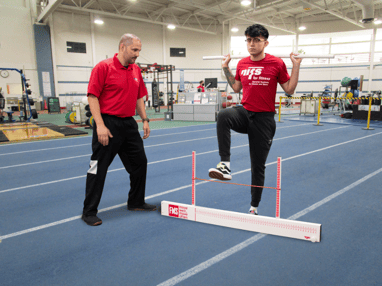 Olympic weightlifting is one of the oldest sports that is still around to this day in the Olympics. Over time the sport has evolved to what it is today, and there are more participants at the national-level events here in the US than ever before. With the help of CrossFit, the weightlifting community has grown substantially in the last decade. Still, however, not many people know of Olympic weightlifting and how to get started in the sport.
Olympic weightlifting is one of the oldest sports that is still around to this day in the Olympics. Over time the sport has evolved to what it is today, and there are more participants at the national-level events here in the US than ever before. With the help of CrossFit, the weightlifting community has grown substantially in the last decade. Still, however, not many people know of Olympic weightlifting and how to get started in the sport.
Who Should Olympic Lift?
Everyone! Olympic weightlifting is for everyone. In a previous blog post, I wrote about the benefits of learning and practicing the Olympic lifts. To sum it up, the benefits are learning a new skill, strengthening the muscles, having goals to work toward, and competing in a fun and welcoming environment. If you are a former athlete and have been missing that competition feeling, weightlifting might be for you. In America, you have the opportunity to lift in small local meets, state meets, larger national meets, and even international competitions if you have what it takes to qualify. The weightlifting community is full of fun, positive, and energetic people who are all there for the same reason. Once you commit to learning the lifts, the next step is to find a coach.
Why You Need a Coach
One of the most important things you can do when starting to learn the Olympic lifts is to find an educated and certified weightlifting coach. Weightlifting has one of the lowest injury rates of all the Olympic sports. However, if you don’t learn proper technique early on, you are more likely to injure yourself. Looking into the future, after proper technique teachings, a coach will give proper programming. A well-thought-out and structured weightlifting program will increase the length of your weightlifting career and ensure proper progressions.
If your goal is to compete in Olympic weightlifting, finding a coach will be crucial to your success not only as you prepare for the competition, but also at the competition. Competitions are fast paced and require more thought than just lifting the weight when it is your turn. There is a lot of planning that happens for competitions, from timing your warmups to counting the number of attempts until you must be on the platform. Having a coach makes the whole experience less stressful for the athlete and makes it go a lot more smoothly. A coach who knows their athletes will be able to motivate and push you to levels you did not know you could reach.
How to Find a Coach
Weightlifting gyms and coaches can be found on USA Weightlifting’s website. You can also do a quick Google search for barbell clubs in your area. You will most likely come across some CrossFit boxes as well. Make sure you find a coach that is certified through USA Weightlifting to ensure you that your coach has gone through the necessary trainings for technique and safety. Just like any other sport, you can be a self-taught lifter. However, learning proper techniques from the beginning will extend your career in the sport.
What Now?
After you have found a certified and experienced weightlifting coach that you trust, it is time to put in the work. Olympic weightlifting is not a sport that you will pick up overnight. It takes hours and hours of intentional practice to master this sport. The athletes at the very top have been training since they were young kids. You should set your goals accordingly and never compare yourself to the athletes that are competing at the highest level. If you trust the process and work hard, you will see progress and become the best version of yourself.
This blog was written by Evan James, NIFS Exercise Physiologist EP-C, Health Fitness Instructor, and Personal Trainer. To learn more about the NIFS bloggers, click here.


 While having a New Year’s Resolution to “lose more weight” isn’t a bad thing, it’s not easy. And depending on how much you want to lose and in what time frame, it’s not always realistic. To benefit your overall health without focusing on your weight, try setting (and sticking to) some of the following nutrition-related resolutions going into 2023.
While having a New Year’s Resolution to “lose more weight” isn’t a bad thing, it’s not easy. And depending on how much you want to lose and in what time frame, it’s not always realistic. To benefit your overall health without focusing on your weight, try setting (and sticking to) some of the following nutrition-related resolutions going into 2023. In a world where people want results in an instant and take drastic measures to achieve those results as fast as possible, developing strength, power and athleticism in a long-term aspect is often overlooked. For any fitness-related result or outcome, improvements take time. Fat loss, overall strength and/or power in any particular lift, speed, and agility are all seeds that needed to be watered for a while before noticeable and permanent changes are evident.
In a world where people want results in an instant and take drastic measures to achieve those results as fast as possible, developing strength, power and athleticism in a long-term aspect is often overlooked. For any fitness-related result or outcome, improvements take time. Fat loss, overall strength and/or power in any particular lift, speed, and agility are all seeds that needed to be watered for a while before noticeable and permanent changes are evident.
 There seems to be an expectation that women are supposed to do it all and not complain. That women are supposed to be wives and mothers, work full time, juggle friendships, have a social life, have time for themselves, so on. Society is ever changing, and we are supposed to keep up with it. Let’s rewind some years ago where most women stayed at home with their children, and taking care of their household was their only responsibility.
There seems to be an expectation that women are supposed to do it all and not complain. That women are supposed to be wives and mothers, work full time, juggle friendships, have a social life, have time for themselves, so on. Society is ever changing, and we are supposed to keep up with it. Let’s rewind some years ago where most women stayed at home with their children, and taking care of their household was their only responsibility. 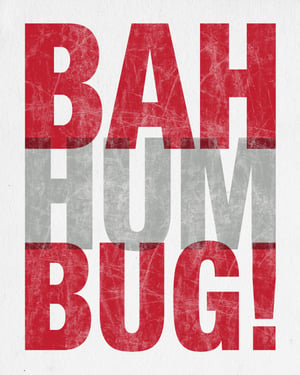 Getting old sucks. That’s right, I said it: getting old sucks. I might be the only one in the fitness world to say it, but it does. I know I’m supposed to be positive about the inevitable passing of time and what each of us face in our journeys—and I’m positive it is not fun at all. No matter whether you are turning 20 or 70, we are all getting older and it is getting old! If you can’t tell by now, I am a bit grumpy about some of the aspects that each passing birthday has in store; and much like Ebenezer Scrooge, I say, “Bah humbug” to it all!
Getting old sucks. That’s right, I said it: getting old sucks. I might be the only one in the fitness world to say it, but it does. I know I’m supposed to be positive about the inevitable passing of time and what each of us face in our journeys—and I’m positive it is not fun at all. No matter whether you are turning 20 or 70, we are all getting older and it is getting old! If you can’t tell by now, I am a bit grumpy about some of the aspects that each passing birthday has in store; and much like Ebenezer Scrooge, I say, “Bah humbug” to it all!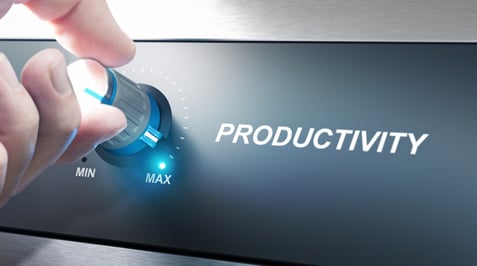 How many times have you looked back at a day and thought, “Man, I wish I would’ve been more productive,” while your to-do list seems to grow and grow. Or maybe you feel like you were crossing a lot of things off the list, but no meaningful work was actually accomplished? In my experience, it’s almost a weekly occurrence. I feel like I’m flying around at work, checking off boxes. But then I get to the end of my day, scan back through, and realize that I didn’t actually work on any of the big jobs that I had originally intended. Its days like these that made me want to begin a blog series that attacks the idea of productivity: what it actually is, where our pitfalls lie, and how we can improve on it to get more out of each day.
How many times have you looked back at a day and thought, “Man, I wish I would’ve been more productive,” while your to-do list seems to grow and grow. Or maybe you feel like you were crossing a lot of things off the list, but no meaningful work was actually accomplished? In my experience, it’s almost a weekly occurrence. I feel like I’m flying around at work, checking off boxes. But then I get to the end of my day, scan back through, and realize that I didn’t actually work on any of the big jobs that I had originally intended. Its days like these that made me want to begin a blog series that attacks the idea of productivity: what it actually is, where our pitfalls lie, and how we can improve on it to get more out of each day.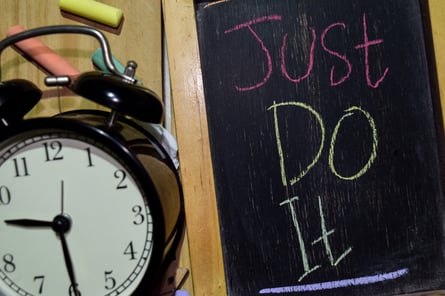 We’ve all been there, right? You’ve chosen a new habit that you want to form: go to the gym four times a week, choose one day a week to grocery shop and meal prep, maybe start work on that side hustle you’ve been meaning to do for years. You’re all in, gung-ho for about five days, and before you know it, you’ve fallen back into the same routine as before. That bright flame that once was your motivation has faded into the background. Now what?
We’ve all been there, right? You’ve chosen a new habit that you want to form: go to the gym four times a week, choose one day a week to grocery shop and meal prep, maybe start work on that side hustle you’ve been meaning to do for years. You’re all in, gung-ho for about five days, and before you know it, you’ve fallen back into the same routine as before. That bright flame that once was your motivation has faded into the background. Now what? I was recently chatting with my brother Tim about work stuff in a conversation filled with multiple shop-talk topics. You see, he is an assistant chief of a pretty large fire department, and we share common goals and challenges when it comes to managing a crew. Needless to say, our conversations can get quite lively and the ideas are always abundant.
I was recently chatting with my brother Tim about work stuff in a conversation filled with multiple shop-talk topics. You see, he is an assistant chief of a pretty large fire department, and we share common goals and challenges when it comes to managing a crew. Needless to say, our conversations can get quite lively and the ideas are always abundant.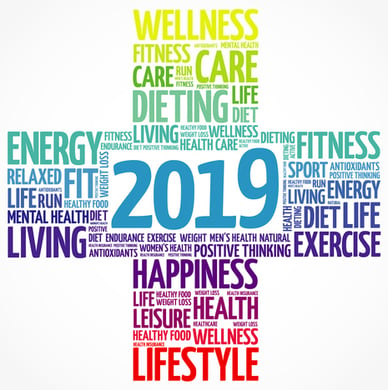 Happy February 2019! Are you a “New You” yet?
Happy February 2019! Are you a “New You” yet?